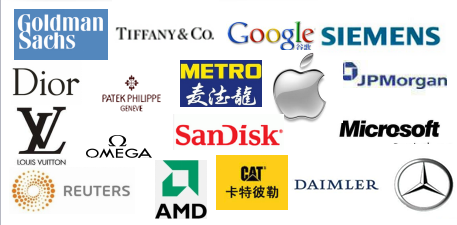
Supplier social responsibility risk assessment management system
Published June20, 2024 Implemented on 20June 2024
Beijing RiskControl Co., Ltd. | Document Number: | GXLN-CSR-WI-19 |
Supplier social responsibility risk assessment management system | Version Number: | 1.0 |
1. Objective: Ensure that the company's suppliers comply with social responsibility standards, prevent social responsibility risks in the supply chain, and protect the company's brand image and customer interests.
2. Scope: This system applies to all suppliers of the company, including those providing goods, services, raw materials, or other entities with whom the company has business dealings.
3. Responsibilities and Organization:
· Social Responsibility Committee: Responsible for formulating, reviewing, and updating the supplier social responsibility risk assessment management system.
· Procurement Department: Responsible for executing the supplier social responsibility assessment and monitoring supplier compliance.
· Legal Department: Provides legal support to ensure the assessment system complies with laws and regulations.
4. Supplier Evaluation:
· 4.1. Preliminary Screening:
o Screening Criteria: All new suppliers must provide basic information, including business licenses, tax registration certificates, social insurance registration, and other legal business documents.
o Basic Information Review: The procurement department reviews the supplier's basic information to ensure its legality and validity.
· 4.2. Risk Assessment:
o Risk Identification: Identify potential social responsibility risks associated with suppliers, such as labor rights, environmental protection, health and safety, etc.
o Assessment Tools: Use standardized assessment tools such as questionnaires, on-site inspections, third-party reports, etc., to gather relevant information.
o Scoring System: Based on the assessment results, suppliers are scored and categorized into low, medium, and high-risk levels.
· 4.3. Evaluation Criteria:
o Labor Rights: Check if suppliers comply with labor laws, and ensure there are no violations such as child labor or forced labor.
o Health and Safety: Assess whether the supplier's workplace meets health and safety standards and whether there are any accident records.
o Environmental Protection: Check if suppliers have caused any environmental pollution incidents and whether they have taken environmental protection measures.
o Business Ethics: Assess whether suppliers adhere to business ethics, and whether there is any corruption, fraud, or dishonesty.
5. Cooperation and Contracts:
· 5.1. Social Responsibility Clauses:
o Contract Requirements: All supplier contracts must clearly specify social responsibility requirements, such as compliance with labor laws and environmental protection regulations.
o Breach of Contract Liabilities: Clearly outline the legal liabilities and consequences for suppliers who violate social responsibility clauses.
· 5.2. Regular Audits:
o Audit Frequency: Based on the supplier's risk level, determine the audit frequency, with high-risk suppliers audited at least once a year.
o Audit Methods: Conduct audits using various methods, such as on-site inspections, document reviews, and employee interviews.
o Audit Report: Prepare a detailed audit report documenting the issues discovered during the audit and suggestions for improvement.
· 5.3. Non-compliance Handling:
o Warning and Rectification: Issue a warning to suppliers who do not meet social responsibility standards and require them to rectify the issues within a specified time frame.
o Termination of Cooperation: Terminate cooperation with suppliers who severely violate social responsibility standards or fail to rectify issues within the stipulated time.
6. Training and Promotion:
· 6.1. Supplier Training:
o Training Content: Include basic concepts of social responsibility, relevant laws and regulations, and the company's social responsibility requirements for suppliers.
o Training Audience: All new suppliers, as well as the management and key employees of existing suppliers.
o Training Methods: Use online or offline methods, such as webinars, on-site seminars, training manuals, etc.
o Training Evaluation: Assess the effectiveness of training through exams or feedback surveys to ensure that suppliers fully understand and comply with social responsibility requirements.
· 6.2. Internal Promotion:
o Promotional Materials: Create promotional materials, such as brochures, posters, and emails, to emphasize the importance of supplier social responsibility.
o Internal Activities: Organize internal activities, such as social responsibility weeks and supplier conferences, to raise employee awareness of supplier social responsibility.
o Internal Communication: Use internal communications and meetings to regularly update relevant information about supplier social responsibility, including policy changes and audit results.
· 6.3. External Promotion:
o Public Reports: Regularly release supplier social responsibility reports, publicly disclosing the social responsibility performance and improvement status of suppliers.
o Case Sharing: Share excellent cases of supplier social responsibility on the company’s website and social media platforms to motivate other suppliers to learn from them.
o Industry Cooperation: Participate in industry associations, forums, etc., to exchange experiences with other companies on supplier social responsibility and collectively raise industry standards.
· 6.4. Continuous Education:
o Updated Training: Regularly provide new training for suppliers based on changes in laws and regulations and updates to company policies.
o Feedback Mechanism: Establish a feedback mechanism to collect suppliers’ opinions and suggestions regarding social responsibility requirements, continually optimizing training content.
7. Records and Documentation:
· Evaluation Records: Detailed records should be kept for all suppliers' social responsibility assessments.
· Audit Reports: Maintain reports of supplier social responsibility audits as a basis for evaluation and improvement.
。
 简体中文
简体中文 English
English

